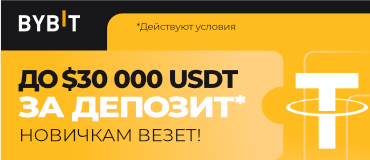Are you a tech startup looking to go public and fundraise? Or are you already operating effectively, but in need of resources? Token listing is a common practice for the cryptocurrency market, but there are many nuances you need to know before getting started. I will share my personal recommendations as the founder and manager of an exchange.
Token listing is a great way for a startup to increase awareness and attract resources. It's a must have for anyone who has ever released a token or created their own coin. Many people pose the question: where do I start? And it's a good question. After you've weighed all the pros and cons, you need to determine the goals that your project can achieve when being listed. Let's begin.
Tip 1. Think through your goals and how to achieve them
Many different goals exist: from honest ones to fraudulent ones. An honest goal involves increasing the liquidity of an asset, attracting new users, increasing token awareness and popularity and, as a result, increasing their business's community. Fraudulent schemes can involve listing just for the sake of having powerful advertising and boosting the sales of the company's available assets. Before any listing, you need to be clear about your goals and how they will be achieved. Exchanges like KickEX try not to list tokens that are created for the sole purpose of being sold as they will ultimately harm the reputation of the exchange.
Tip 2. Prepare your resources
Initially, it's important to understand that listings aren't free, and that they cost money. The bigger the exchange, the more leverage it has, and that means the listing price will be higher. TIR-3 exchanges have listings starting at $15,000, medium exchanges between $100,000 and $300,000, and top exchanges up to several million. While everyone likes to say their listing is free, this isn't the case in practice. Oftentimes, one must make a mandatory donation to a charity fund, but this money doesn't even make it to the charity and is withdrawn through various schemes.
Furthermore, it's important to keep trading volume and market making in mind. These are needed to make it attractive for users to come and buy and sell tokens. And to "make it attractive", in addition to the cost of the listing itself, you have to be willing to shell out a significant amount of money. This often starts from $20,000 and may go up to several hundreds of thousands given a large audience. In addition, a large enough trading volume allows everyone to see that the token is worth buying. This is how all exchanges work, and this procedure isn't regulated by anyone. These processes on traditional exchanges would be stopped immediately, but it's a normal story for cryptocurrency exchanges.
When it comes to market-making, either the project itself or the exchange has to do it. Our exchange has a corresponding department that provides this service as not everyone knows how to do this on their own, and outsourcing teams usually have very expensive costs, approximately $5,000 per month. But! In addition to financial work, you should also do some other preparatory work.
Tip 3. Choose your exchange carefully
Ask yourself this: Do you really need crypto market whales? Will you have enough to cover a security deposit for the largest exchange? Will you be able to provide the right trading volume for it, as mentioned above?
Additionally, to help you make the right evaluation, take a look at the exchange itself and how suitable it is for you. A sensible choice is an exchange that gives you real trading volume as well as additional perks, like market-making and accounts for it. Examine the exchange's website itself (which doesn't include CoinMarketCap) and see how active the exchange's audience and its users are on social media. You should also pay attention to exchange trading volumes, for an ideal count of approximately 50 million a day on an active market. If the exchange has a very large volume, but it isn't on any services and doesn't have any marketing or PR activity, then there is reason to doubt the volume's validity.
It makes sense that different exchanges have different price offers for listings. Some sites actually carry out promotional campaigns from time to time. For example, we at KickEX understand that these price offers can reach hundreds of thousands of dollars, and that these amounts are unrealistic for young companies. At the same time, we believe that the market needs new tools as a stimulus for growth, so in the spring we held a campaign: a free listing for three promising startups.
Tip 4. Study the terms in detail
This doesn't only go for the listing agreement; read the contract carefully. It's quite unlikely that there will be any tricks in a document like this, but it's better to be safe than sorry. Are all aspects taken into account? How is market-making defined? What are the time limits for listing preparations, and how soon can the token appear on the exchange? What are the taker/maker commission terms? What are the spread conditions on trading volume? Perhaps the contract might say something about a penalty in the event that the terms aren't met such as, for example, if the trading volume and liquidity are lower than described in the contract.
Tip 5. Provide adequate support and promotional listings
Last but not least, as they say.
I once came across an interesting statistic. Apparently, more than 80% of cryptocurrency startups survive for less than four months. This isn't just because of bugs and failing to meet the needs of users, but also because of mistakes in the promotion of the project. For new projects, a lack of marketing can quickly lead to failure, as no one will ever find out about it.
When a token is listed on an exchange, it's silly to expect that everyone will want to trade it at once. People won't just randomly know about it – neither the audience of the exchange, nor the holders of the token itself. That's why it's important for the project that issued it to warm up its community, as that's in the project's interest. But to do that, a community like this has to be created first (if one doesn't exist yet) and supported in every possible way. It's not worth chasing after statistics or buying subscribers and reviews. Discussing the project on social and mass media is much better, as well as organizing activities for subscribers, asking their opinion about the product and, as simplistic as it may sound, giving gifts. If major publications write about the project and influencers collaborate with it, its prospects are higher than those of similar products.
Let's move on to the listing promo. Among the strategies that work well are announcing listings, countdowns, high-quality newsletters, and mentions across social media. And to attract the exchange's audience, you should spend the extra penny on organizing a trading competition for your token to grow. This is the only way to get any activity on the exchange. And there are other tokens out there, doing contests, airdrops, and AMA sessions for the community. It's important to remind the exchange's audience constantly that your token exists, and that it is active, alive, and can be interacted with. The biggest mistake you can make is thinking that one investment in advertisement is enough. Nevertheless, you don't want to run overly-aggressive ads and get banned from Twitter, Reddit, or Google.
To summarize, even the most interesting of projects won't be profitable without a community, advertising, and an active market. Promotion is as important a part of the work on the product as development.
In general, you should treat the token listing process as a small ICO. Simply listing the token and expecting the exchange to do everything for you isn't enough, and that's simply the case everywhere. Only through a series of programs, activities, special projects that are started a month beforehand will give you actual results. These, in turn, need to be supported by other actions even after you list your token. At the end of the day, if you're not working on a systematic basis, you're not working at all…
























































